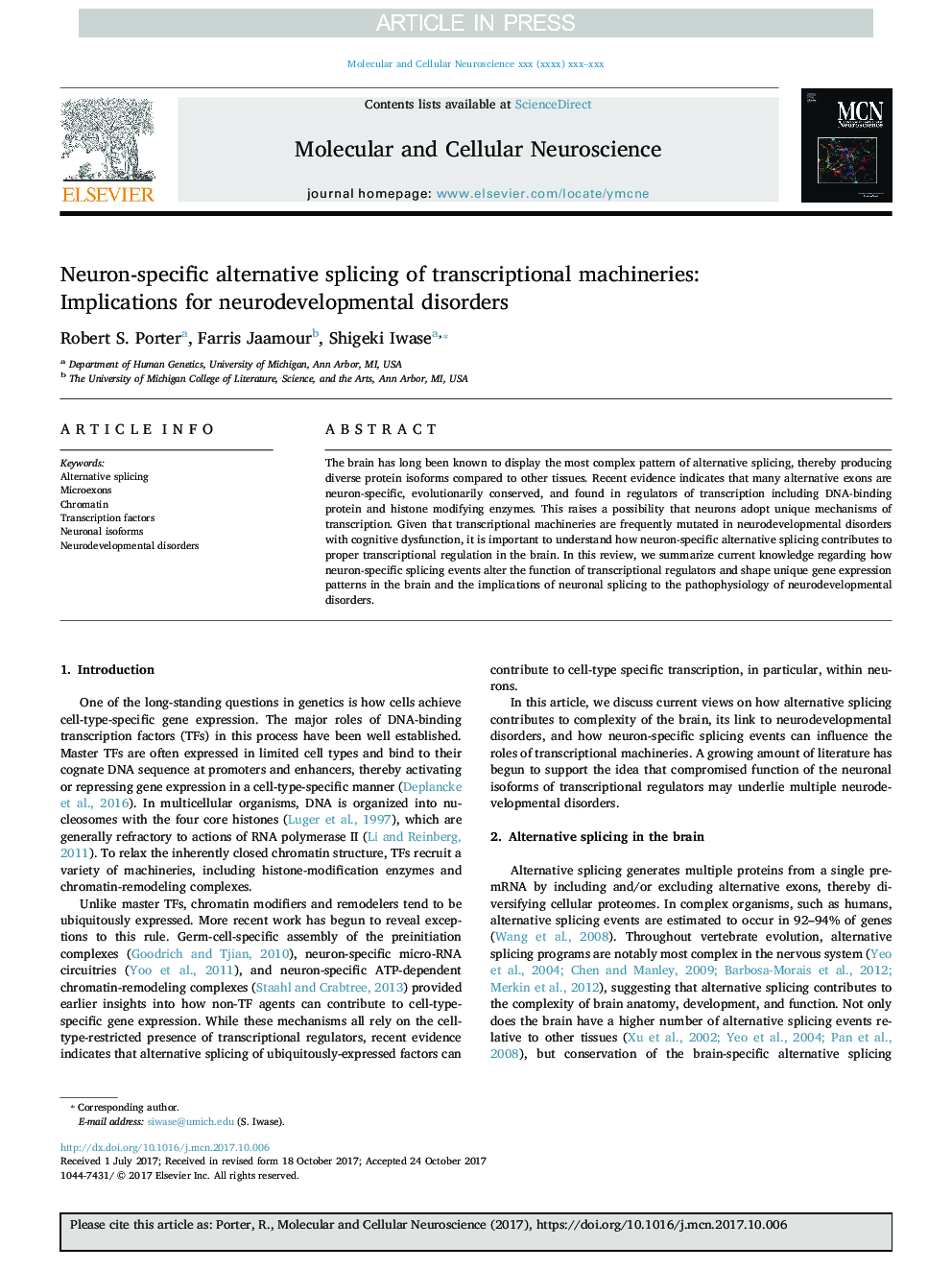| Article ID | Journal | Published Year | Pages | File Type |
|---|---|---|---|---|
| 8478402 | Molecular and Cellular Neuroscience | 2018 | 11 Pages |
Abstract
The brain has long been known to display the most complex pattern of alternative splicing, thereby producing diverse protein isoforms compared to other tissues. Recent evidence indicates that many alternative exons are neuron-specific, evolutionarily conserved, and found in regulators of transcription including DNA-binding protein and histone modifying enzymes. This raises a possibility that neurons adopt unique mechanisms of transcription. Given that transcriptional machineries are frequently mutated in neurodevelopmental disorders with cognitive dysfunction, it is important to understand how neuron-specific alternative splicing contributes to proper transcriptional regulation in the brain. In this review, we summarize current knowledge regarding how neuron-specific splicing events alter the function of transcriptional regulators and shape unique gene expression patterns in the brain and the implications of neuronal splicing to the pathophysiology of neurodevelopmental disorders.
Related Topics
Life Sciences
Biochemistry, Genetics and Molecular Biology
Cell Biology
Authors
Robert S. Porter, Farris Jaamour, Shigeki Iwase,
